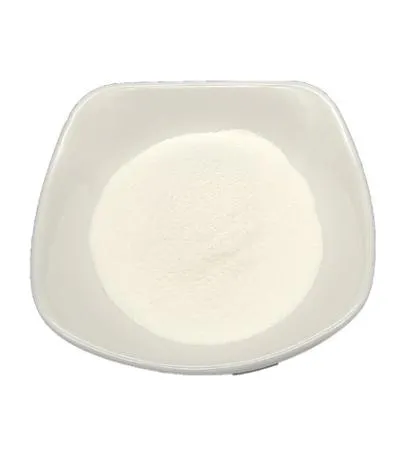Warning: Undefined array key "title" in /home/www/wwwroot/HTML/www.exportstart.com/wp-content/themes/1198/header.php on line 6
Warning: Undefined array key "file" in /home/www/wwwroot/HTML/www.exportstart.com/wp-content/themes/1198/header.php on line 7
Warning: Undefined array key "title" in /home/www/wwwroot/HTML/www.exportstart.com/wp-content/themes/1198/header.php on line 7
Warning: Undefined array key "title" in /home/www/wwwroot/HTML/www.exportstart.com/wp-content/themes/1198/header.php on line 7
Dec . 10, 2024 19:48 Back to list
Exploring the Benefits and Risks of Saccharin as a Sugar Alternative
Saccharin The Sweet History and Future of a Controversial Sweetener
Saccharin, one of the oldest artificial sweeteners, has a storied history that spans over a century. Discovered in 1879 by chemist Constantin Fahlberg, saccharin was the first synthetic sweetener and has played a significant role in the development of sugar substitutes. Despite its long-standing presence in the market, saccharin has often been embroiled in controversy and debate regarding its safety and efficacy. This article will explore the origins, uses, health concerns, and future prospects of saccharin as a sweetener.
Origins of Saccharin
The discovery of saccharin happened quite by accident. Fahlberg, while working on coal tar derivatives, noticed a sweet taste on his hands after conducting experiments. Through rigorous testing, he identified the compound responsible for the sweetness, leading to the first artificial sweetener. Saccharin is approximately 300 to 400 times sweeter than sucrose (table sugar), making it an attractive alternative for those seeking to reduce caloric intake without sacrificing taste.
Initially, saccharin gained popularity during World War I when sugar shortages prompted many to seek alternatives. It became a staple in various food products and drinks, helping to satisfy the sweet tooth without the calories associated with sugar. However, its popularity was not without complications.
Health Concerns and Controversies
In the mid-20th century, investigations into saccharin's safety ignited a wave of controversy. In the late 1960s, studies conducted on laboratory rats suggested a link between saccharin and bladder cancer. Consequently, in 1972, the U.S. Food and Drug Administration (FDA) proposed a ban on saccharin, which led to widespread alarm and concern among consumers.
However, further research challenged these findings, revealing that the rat study was not directly applicable to humans. Subsequent investigations indicated that the mechanism causing cancer in rats did not occur in humans, prompting the FDA to reverse the ban on saccharin in 2000. Despite this, saccharin continues to carry a controversial label, with some health advocates warning against its use.
Uses in the Modern Era
saccharin sweetener

Today, saccharin is an integral component of many low-calorie and sugar-free products. It can be found in a variety of foods, including soft drinks, baked goods, and even some medications. Saccharin is appealing to those with diabetes and individuals looking to manage their weight, as it provides sweetness without contributing to blood sugar spikes.
In the United States, saccharin is often marketed under brand names such as Sweet'N Low, which has become synonymous with artificial sweeteners. Its unique property of being heat-stable makes it particularly versatile for cooking and baking, further expanding its usability in the food industry.
The Future of Saccharin and Artificial Sweeteners
As health awareness grows and the demand for sugar alternatives rises, the future of saccharin and other artificial sweeteners appears promising. However, innovation in the sweetener market continues to evolve. Newer sweeteners such as stevia and monk fruit have gained prominence due to their natural origins and perceived health benefits, creating competition for traditional sweeteners like saccharin.
Despite this competition, saccharin remains a cost-effective solution for food manufacturers. Its longstanding history, stability, and sweetness make it difficult to replace entirely. Additionally, ongoing research continues to explore saccharin’s potential benefits and risks, aiming to clarify its role in modern diets.
Conclusion
Saccharin’s journey from discovery to controversy and now acceptance highlights the complexities surrounding artificial sweeteners. While it has faced significant challenges over the years, including health scares and evolving consumer preferences, it retains a position in the market. As science advances, society becomes more health-conscious, and consumer preferences shift, the future of saccharin will be shaped by ongoing research and public perception.
In conclusion, saccharin serves as a reminder of the balance between innovation and caution in the realm of food science. As we navigate our collective journey towards healthier lifestyles, sweeteners like saccharin will continue to play a role, whether as a primary choice or a historical footnote in the ever-evolving story of what we consume.
Latest news
-
Certifications for Vegetarian and Xanthan Gum Vegetarian
NewsJun.17,2025
-
Sustainability Trends Reshaping the SLES N70 Market
NewsJun.17,2025
-
Propylene Glycol Use in Vaccines: Balancing Function and Perception
NewsJun.17,2025
-
Petroleum Jelly in Skincare: Balancing Benefits and Backlash
NewsJun.17,2025
-
Energy Price Volatility and Ripple Effect on Caprolactam Markets
NewsJun.17,2025
-
Spectroscopic Techniques for Adipic Acid Molecular Weight
NewsJun.17,2025

